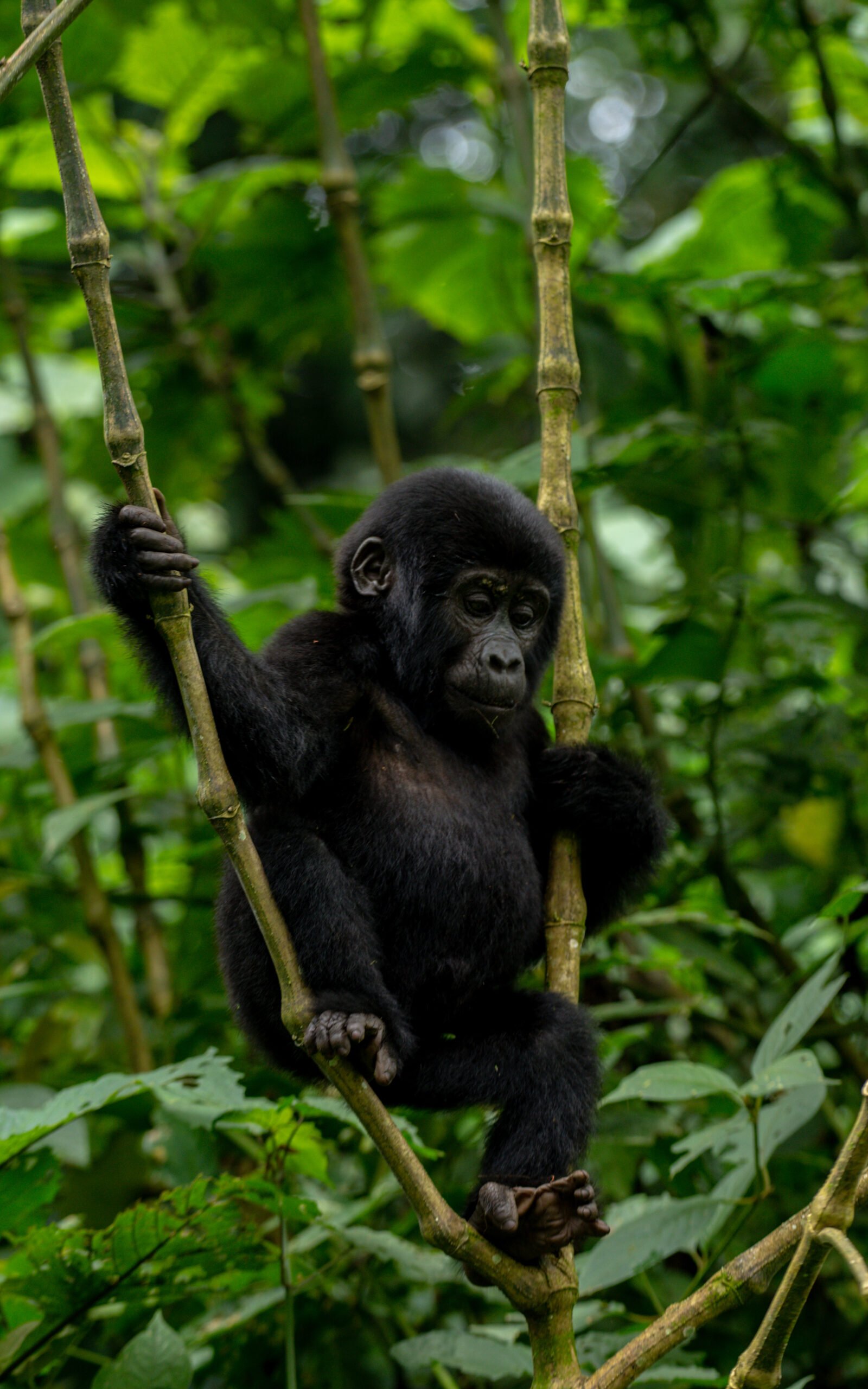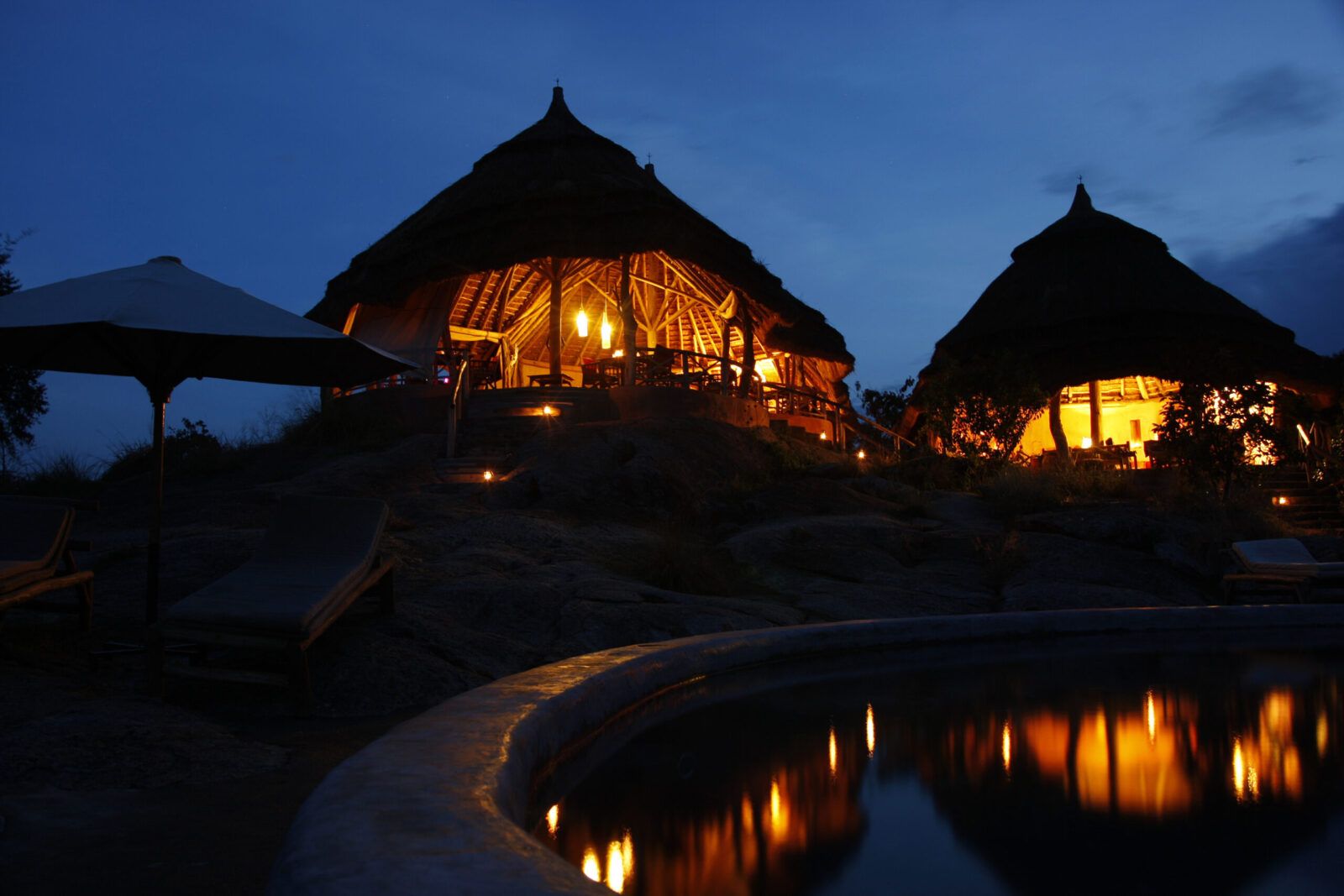Reasons Why You Should Visit Bwindi Impenetrable National Park In Uganda.
One of the main choices for a safari trip in Uganda is visiting Bwindi Impenetrable National Park; consequently, you should make such a visit. The principal Uganda safari activity available only in two parks, Mgahinga National Park and Bwindi Impenetrable National Park, is gorilla trekking. In southwest Uganda is Bwindi Impenetrable National Park.
More than half of all the mountain gorillas in the world find home in the Park. Celebrated remnants of the ice period, this woodland national park is a biosphere reserve.
Bwindi Impenetrable National Park has over 10 primate species. Among them are mountain gorillas, blue monkeys, grey-cheeked mangabey, olive baboons, chimpanzees, black and white colobus, Lhoest’s, and red-tailed monkeys.
Sometimes it might be difficult as the bwindi forest species is entwined in plants covering hills, plateaus, and steep valleys.
You travel throughout a dense forest, experiencing the fresh wind from this natural habitat during the gorilla trekking trip.
Part of nature, Bwindi Impenetrable National Park has glittering waterfalls created by the rich river network, including the water source for the region.
One of the best African safari experiences is gorilla trekking in Bwindi Impenetrable National Park.
What Should I Do in Bwindi Impenetrable National Park Gorilla Trekking in Bwindi Forest
Gorillatrekkingg is the magnetic attraction of Bwindi Impenetrable National Park. Being a huge forest, the administrative tasks of this dense and wide one were demanding. Bwindi National Park was thereby split up into the Nkuringo region, the Ruhija area, the Buhoma area, and the Rushaga area.
Sales of gorilla permits come from these locations. You thus need to know where your permit is kept before booking lodging for your gorilla trekking expedition. This helps you avoid waking rather early to catch up with a briefing in another location and drive.
Eighteen gorilla families are available for tourists and are completely settled right now. To engage in gorilla trekking, you need a gorilla permit issued by the Uganda Wildlife Authority. Gorilla trekking, each gorilla family per day, only permits a maximum of eight visitors.
A Gorilla Permit for Bwindi Impenetrable National Park: How Much
For international non-residents, the Bwindi Impenetrable National Park gorilla permit costs $800 per person each trip; for foreign residents, it costs $700; and for East Africans, it costs 300 000shs.
Park fees, gorilla conservation payments, ranger guide fees, security, and one hour with the mountain gorillas comprise this gorilla permit cost.
A gorilla permit’s fee does not include transportation, refreshments, porters, tipping, or any other personal item.
Can I get the Gorilla permit for Bwindi Impenetrable National Park In Installments?
For Bwindi Impenetrable National Park, paying for a gorilla permit in installments is OK as long as you buy it ninety days before the day of trekking. You have to remember to top up entirely 90 days before hiking or stand to lose it.
Is a possible Gorilla Trekking Permit Reschedule for Bwindi Impenetrable National Park?
Indeed, if you follow the following, you are free to postpone your gorilla trekking permit for Bwindi Impenetrable National Park.
Write to the Uganda Wildlife Authority explaining why you would like to change the date of your gorilla permit.
In case you want to support your claim, provide proof.
If your response is a go-ahead, you have to know the date you want to change your gorilla permit for.
You have one last option should you desire to postpone your gorilla permit once more. The third rescheduling demands a 25% premium on the whole gorilla permit fee.
Mountain Gorilla Habituation Safari in Bwindi Impenetrable National Park
Wild mountain gorillas utilized in human presence without changing their character are being trained via gorilla habituation.
Tourists join trackers and habituation to follow a semi-habituated gorilla family in the jungle during the gorilla habituation safari. Only four visitors are authorized to engage in daily gorilla habituation. This only takes four hours after you find the mountain gorillas. Since these mountain gorillas still exhibit rather wild behavior, expect wild actions like hiding.
There are only two gorilla families accessible for gorilla habituation in Bwindi Impenetrable National Park in the southern section.
A Gorilla Habituation Permit for Bwindi Impenetrable National Park costs what?
Every Gorilla habituation permit for Bwindi Impenetrable National Park costs $1500 per person each trip.
To list but a few, this sum covers 4 hours with the mountain gorillas, ranger guide costs, security, and money assistance for mountain gorilla preservation.
The gorilla habituation permit’s fee excludes tips, transportation, refreshments, packed lunch, and others.

Bwindi Impenetrable National Park.
One of the best places in Uganda for birding, Bwindi forest has some of the greatest forest birding available in Africa. Over 1000 bird species are said to be present in Uganda, a number that may be more than that of all of Europe.
Currently home to more than 350 bird species, including perhaps 23 of Uganda’s 24 Albertine Rift unique species, Bwindi Impenetrable National Park
Any Uganda birding excursion will benefit much from the Ruhija section of Bwindi Impenetrable National Park, which has a rather ideal habitat. On your way from Kabale to Ruhija, you may see various birds. Furthermore, the Mubwindi swamp trip is a birder’s paradise as you pass through the bamboo zone to reach the Afromontane flora.
Among the species you might find in the Bwindi Impenetrable forest are Handsome Francolin, pink-footed puffback, White-napped raven, Rwenzori Turaco, African hill babbler, Cassin’s rey flycatcher, African green broadbill, Western Green Timber bird, and others.
Nature Walks Inside Bwindi Impenetrable National Park
You might see other fascinating forest areas like waterfalls, stunning vistas, see birds, a range of primates, and so much more on a guided, laid-back stroll in Bwindi Impenetrable National Park. Among these woodland hikes are:
Starting from Buhoma, Munyanga River Trail winds around woodland margins. You might find many beautiful sites, monkeys, and others using this.
Among other things, the Waterfall Trail runs among epiphytic ferns, tree ferns, and orchids to glittering cascades.
Climb to the top of Rukubira Hill and savor the amazing views of the Bwindi forest. Then, enjoy the amazing view of the western rift valley along with the Virunga hills. Muzabajiro Loop path. Six Virunga ranges; some of them include Mountain Gahinga, Mountain Muhabura, Mountain Sabyinyo, Mountain Karisimbi, Mountain Bisoke, and others.
Starting from the Nkuringo region in southern Bwindi Impenetrable National Park, the River Ivi Trail follows the ancient road path via breathtaking woodland vistas.
Local stroll in the community
Local community visits for visitors help to involve the mountain gorilla conservation effort. Consequently, the visitors find themselves fully engaged in the everyday lives of the residents around Bwindi Impenetrable National Park. The local people must be sensitive to the need to preserve the threatened mountain gorillas and their surroundings.
Among the communal walks are several, like:
Cultural events include a communal stroll in Buhoma.
The residents run this stroll, bringing guests inside the town to see their way of life. Among the places you could visit are a traditional healer, a banana brewery, a farm, and more. You may also go to a nearby cultural dance event, although this is only on request.
Walks from Nkuringo Community
Visit a blacksmith, a beer brewery, a traditional healer, and others in the southern section of Bwindi Impenetrable National Park.
When should one visit Bwindi Impenetrable National Park?
Though many favor the dry season, Bwindi Impenetrable National Park is available all year round for every kind of activity. This tropical jungle is renowned for getting rain anywhere with no notice. Usually June to September and from December to January, the woodland grows less humid in dry seasons.
The features of the ground less damp and less slippery, might be employed for gorilla trekking and other sports. Furthermore, the rivers run within their limits due to less rainfall during this season.
Most of the people who live in the forest are active in Bwindi forest and may be observed going about their daily routines or hunting for food.
In the dry season, combining gorilla trekking with other Uganda safari activities like wildlife drives is more fascinating.
These are some of the advantages for individuals wishing to visit Bwindi Impenetrable National Park in the rainy season, generally March to May.
This is more likely in the low season when prospects of getting cheaper pricing are more open if you have a restricted budget, yet desire to enjoy upper-class services. Certain safari companies may also give savings for lodging, car rentals, and ranger guides.
In the low season, when fewer people are scheduled for the day, there are more possibilities for an unprepared single gorilla trekking adventure.
Gorilla trekking in Bwindi Impenetrable National Park lasts how long?
Different elements in the forest mean that the timing of finding the mountain gorillas in Bwindi’s impenetrable National Park is still unknown. The closeness of the gorilla feeding ground might force them from the trail beginning point, either closer or further into the woods.
The general state of the weather in Bwindi Forest means that during the heavy rainy season, the terrain might be muddy and slick. This might cause you to arrive where the mountain gorillas spend their days later than expected.
Gorilla hiking requires some patience if one wants to find where the mountain gorillas may be.
Why Is Trekking Through Bwindi Impenetrable National Park Difficult?
The terrain of Bwindi Impenetrable National Park is mostly volcanic, so the soils are soft. Still, the terrain may sometimes be muddy and treacherous when it rains. You may sometimes have to climb certain slopes and plateaus throughout the trip. It would be advisable to pack safari footwear designed to withstand such environments and avoid twisted ankles while you walk.
Stretching your muscles more can help you locate the mountain gorillas or golden monkeys.
What should one bring for a Safari in Bwindi Impenetrable National Park?
Safari boots are designed to resist muddy wilderness environments.
Rainproof clothing as the temperature of this woodland varies at any time without notice.
Warm clothing such as a shawl or jacket is advisable as Park temperatures can fall below 7 degrees centigrade.
Insect repellent to keep buzzing wilderness creatures away that could hurt you
Hand them to a porter in case you need them; rainproof backpacks to fit your gorilla trekking equipment.
Some cash in case you must make on-ground transactions. The long process of getting money from credit cards makes them little utilized in Africa.
To stop insects from creeping into your garments, tuck two stockings to tack in your pants.
Garden gloves protect your hands from coming into contact with polluted surfaces when you slip and fall.
First aid pack with emergency supplies in case you need help.
Carry a Duffel bag with your stuff in case you run into no assistance.
Wearing warm enough pajamas to go to bed can help you stay warm.
The don’ts of Bwindi Impenetrable National Park?
Bwindi Forest is a fruitful ground for foliage on which mountain gorillas and other forest residents eat, hence trash cannot be dumped there.
Especially the mountain gorillas, keep a distance of around eight meters from the forest residents.
Spitting on the ground or plants is against policy, as you could spread pathogens to wild monkeys.
Flash photography should never be used in Bwindi Impenetrable National Park as it may frighten other forest residents, including mountain gorillas.
When you come across mountain gorillas, avoid encirclement of them. Their agitation drives them toward the deeper sections of the forest.
Mountain gorillas are only seebyto youngsters fifteen years of age and above.
One hour is given while observing the mountain gorillas. This is so since they are used to facing people for only one hour.



